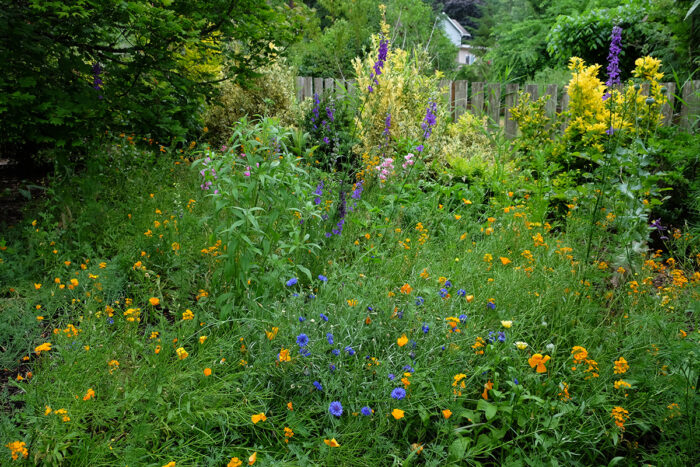
It is hard to read any garden magazines or social media posts without seeing wildflower meadows. It is fun to think about dedicating a part of your garden to wildness. An unstructured meadow is diverse, supports insects, and can be wildly beautiful. It is not without a bit of effort, however. Balancing the few needs of wildflowers and the rest of the garden can be hard to manage, but it is totally doable. Inspired by several articles, I decided to try my hand at creating a Pacific Northwest wildflower meadow.
Site selection and preparing the space
For this endeavor, I selected a section of my garden located on the southeast corner of my property, where I had been developing screening from my neighbors. A large vine maple (Acer circinatum and cvs., Zones 5–9) sits in the center of this area, allowing room around the base for the meadow. The challenge was that I had already put the snowdrop (Galanthus spp. and cvs., Zones 3–9) meadow there. Instead of just one meadow and one season of interest, though, I decided to layer one on top of the other in the same garden space. The snowdrops were in a lawn originally, but it was a bit scruffy and didn’t look great after spring.
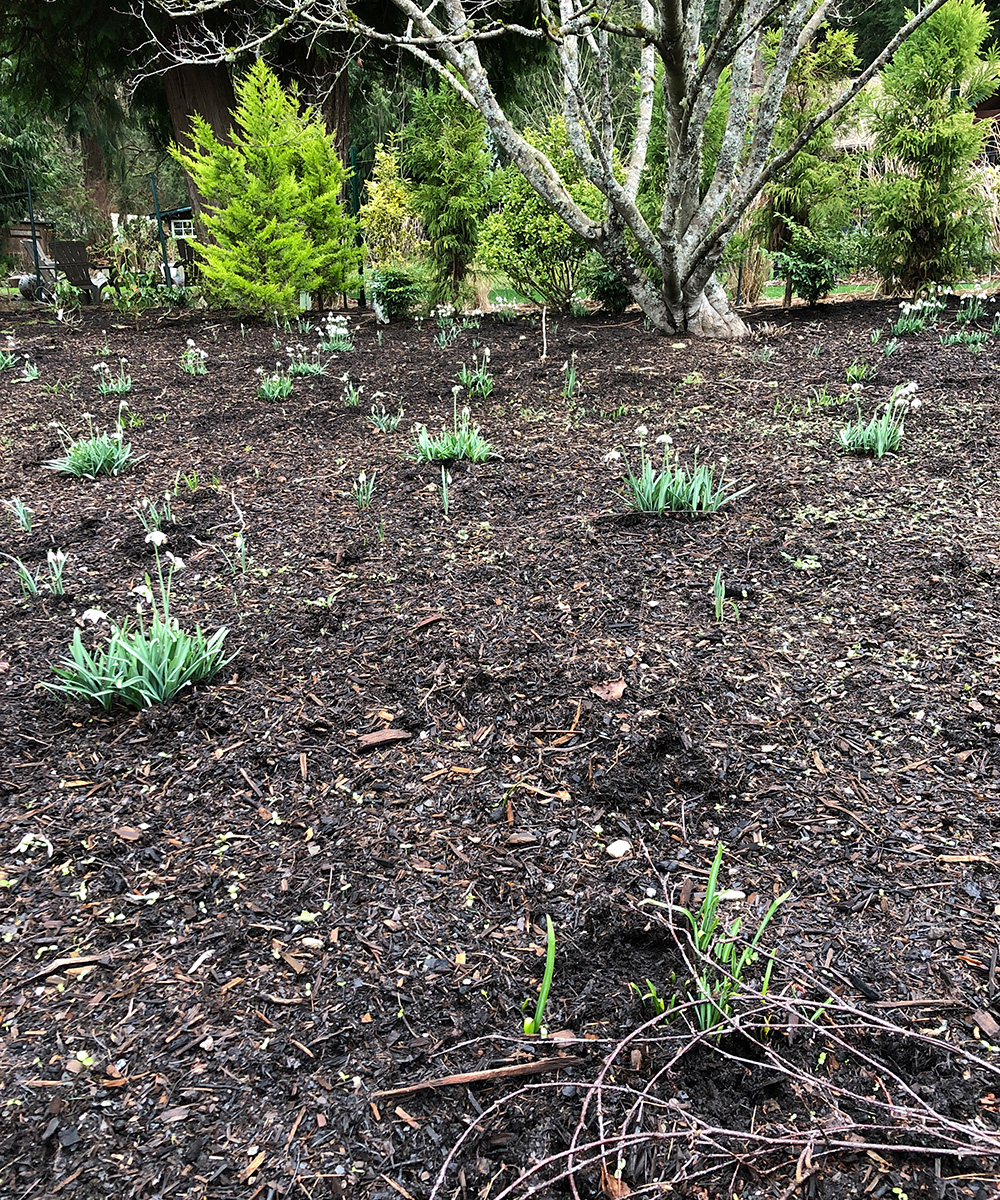
Adding mulch and plants, and experimenting with placement
In 2019, I removed the grass and added a layer of mulch to benefit the snowdrops and primroses (Primula spp. and cvs., Zones 3–11) planted there. I separated the snowdrops and spread them out. In the fall, I planted a couple of seed packets with “native” wildflowers for the Pacific Northwest. There were also a couple of packets purchased on a trip to Montana that made it into the mix as well.
By the spring of 2020, the snowdrops were up and very visible (my goal) from the house, which is quite a distance away. They go dormant about the time the wildflowers start showing up. Pulling out weeds while things were just starting was mostly successful. The thistle and dandelions were the targeted weeds, as they seed so prolifically into the meadow and the rest of the garden edging the meadow.
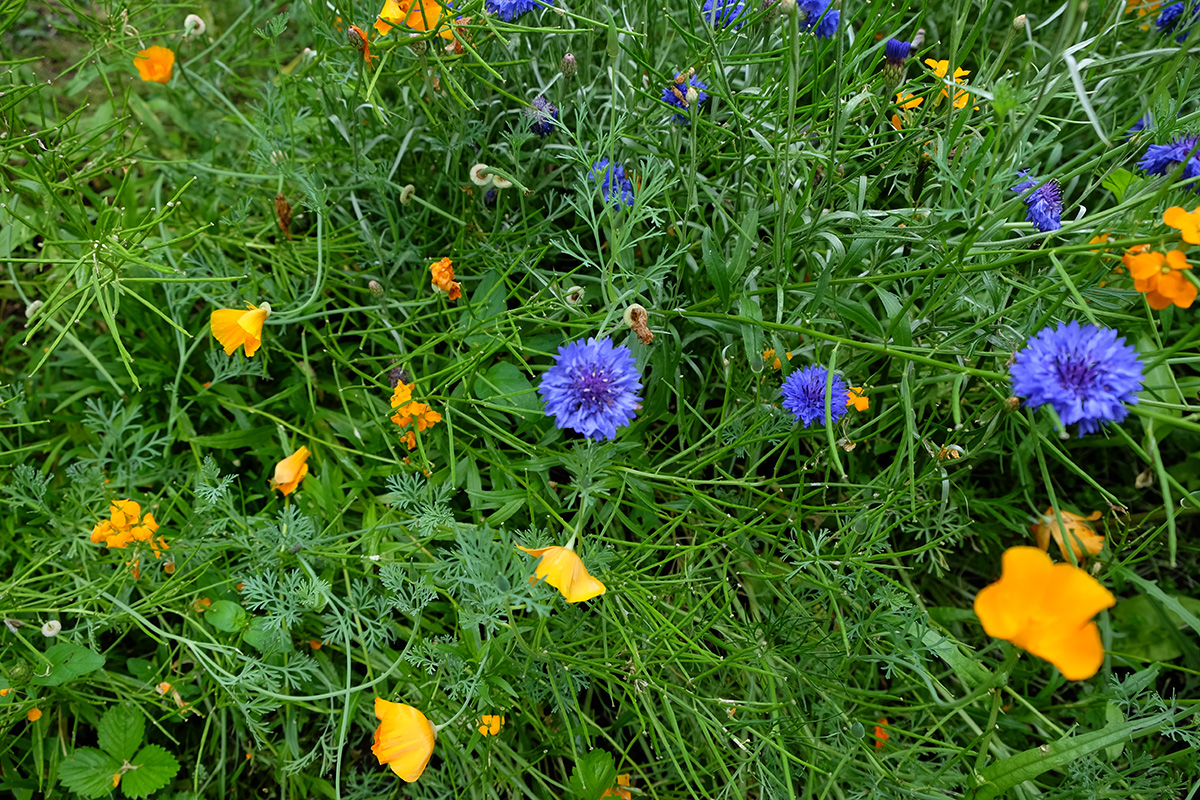
The first year was OK, with lots of orange by way of California poppies (Eschscholzia californica and cvs., annual) and Siberian wallflowers (Erysimum × allionii and cvs., syn. Cheiranthus × allionii and cvs., Zones 3–8). Some of the other more desirable plants were there, but not in great amounts. This included larkspurs (Delphinium spp. and cvs., Zones 5–9), bachelor buttons (Centaurea cyanus and cvs., annual), and pot marigolds (Calendula officinalis and cvs., annual).
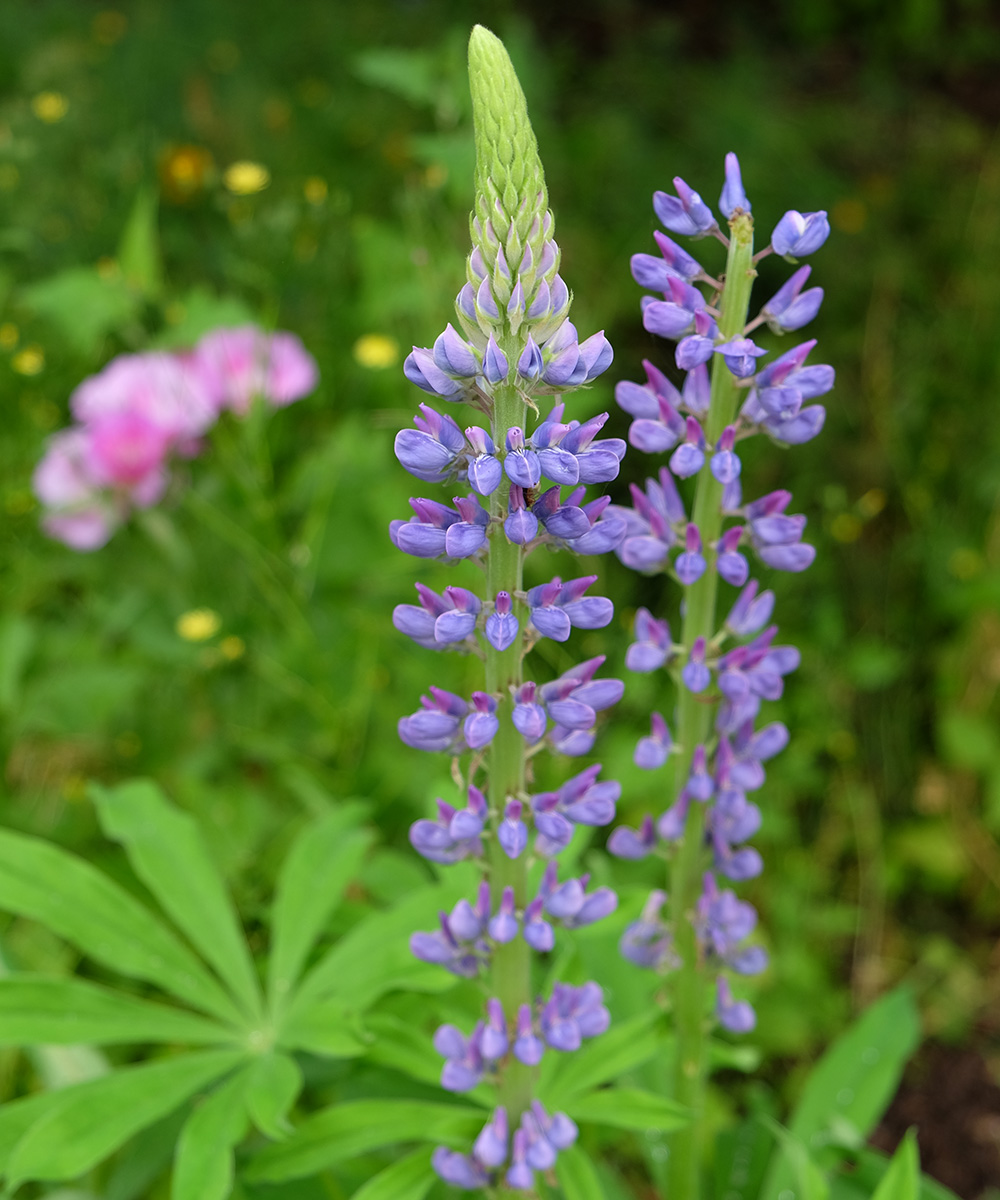
Continue to add seeds, and adjust with the garden
The second year proved to be more interesting—with more larkspurs, bachelor buttons, and pot marigolds (including color variations), but also lupines (Lupinus spp. and cvs., Zones 4–10), columbines (Aquilegia spp. and cvs., Zones 3–9), purple poppies (Papaver spp. and cvs., Zones 2–9), foxgloves (Digitalis spp. and cvs., Zones 3–9), and sunflowers (Helianthus annuus and cvs., annual). Still lots of orange.
My meadow is behind my white garden, which is all white with no bright colors for much of the year. Photos of the white garden do have an orange background. The good thing is the wildflowers can be seen from the house as well as through all the surrounding gardens.
Things I’ve learned about un-gardening in this meadow
One of the major benefits of the meadow, besides the cool wild feeling, is abundant bee and butterfly activity. The buzzing is audible, and birds can be found perched in the vine maple most of the time. It looks better than the weedy lawn that was there, and it is exciting to come up and see what is changing weekly. Biennial seeds, mutations of colors, and seeds that were dormant for a bit before coming up keep things interesting.
- Wildflower meadows do better with poor soil and a lack of fertilizer and water. This was a compromise with the snowdrops planted in the same spot.
- Weeding is not that important in a field that is far away from the main garden. Close to other cultivated garden areas, however, it is more work.
- Seed mixtures are not very designer friendly. Mixed colors are what you get. I could not find dedicated colors in wildflower mixes. It would be best to buy individual seeds and mix them yourself to achieve a color goal.
- This meadow is not mowed and doesn’t have grasses. At the end of the season when things started to go to seed, I cut seedpods off and sprinkled them around. I used none of the California poppies, but they came back anyway. When the meadow was dormant (winter), I pulled all the dead plants and lightly raked the area. No reseeding was needed the second year.
Now to see about the field by the chicken coop . . .
—Susan Calhoun is the owner of Plantswoman Design in Bainbridge Island, Washington.
Fine Gardening Recommended Products

National Wildlife Federation®: Attracting Birds, Butterflies, and Other Backyard Wildlife, Expanded Second Edition (Creative Homeowner) 17 Projects & Step-by-Step Instructions to Give Back to Nature
Fine Gardening receives a commission for items purchased through links on this site, including Amazon Associates and other affiliate advertising programs.

ARS Telescoping Long Reach Pruner
Fine Gardening receives a commission for items purchased through links on this site, including Amazon Associates and other affiliate advertising programs.

Ho-Mi Digger - Korean Triangle Blade
Fine Gardening receives a commission for items purchased through links on this site, including Amazon Associates and other affiliate advertising programs.




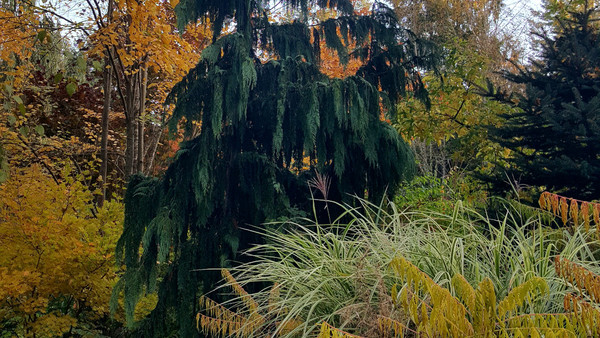














Comments
Log in or create an account to post a comment.
Sign up Log in